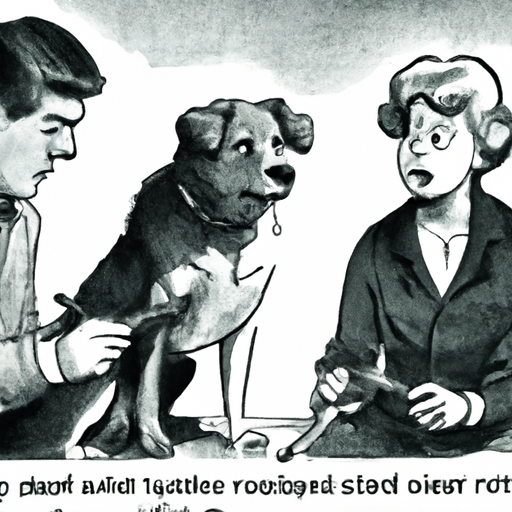As a pet parent, noticing blood on your dog’s favorite chew toy can be alarming. While occasional gum bleeding may not necessarily indicate a serious problem, persistent or heavy bleeding could be a sign of an underlying health issue. This comprehensive guide will delve into the potential causes, treatment options, and ways to prevent your dog’s gums from bleeding when chewing a toy.
Table of Contents
- Understanding Dog Dental Health
- Causes of Gums Bleeding
- How to Treat Bleeding Gums
- Preventing Gum Bleeding
- When to See a Vet
- Frequently Asked Questions
Key Takeaways
- Proper dental health is essential for dogs, just as it is for humans.
- Various factors, from aggressive chewing to periodontal diseases, can cause a dog’s gums to bleed.
- Regular oral hygiene practices can help prevent gum bleeding.
- If the bleeding persists, it’s crucial to seek professional help from a vet.
Understanding Dog Dental Health
Just like humans, dogs’ dental health plays a crucial role in their overall well-being. Dogs use their mouth for almost everything – eating, playing, exploring, and even communicating. It’s important to regularly check their gums and teeth to ensure they’re healthy. The American Veterinary Medical Association recommends annual dental checkups for pets.
Dogs’ gums should ideally be pink, although some dogs naturally have black or spotted gums. Any changes in their normal gum color or texture should be noted.
Causes of Gums Bleeding
There are several reasons why your dog’s gums may bleed when chewing a toy. Here are some of the most common causes:
- Aggressive Chewing: Some dogs have a habit of chewing their toys aggressively. Hard toys can cause minor injuries to the gums leading to bleeding.
- Gum Disease: Also known as periodontal disease, this is a common issue in dogs. The American Veterinary Dental College states that most dogs have some form of periodontal disease by the time they’re three years old.
- Oral Infections: Infections in the mouth can cause gums to become sensitive and bleed easily.
Here are some helpful tips on choosing the right toys for aggressive chewers.
How to Treat Bleeding Gums
When you notice your dog’s gums bleeding, the first step is to identify the source of the bleeding. This can often be done by a simple oral examination.
- Clean the area: Use a soft, damp cloth to clean the bleeding area gently. This will remove any blood clots and allow you to see the wound more clearly.
- Apply cold compress: A cold compress can help reduce swelling and stop the bleeding. Wrap an ice pack in a thin cloth and apply it to your pet’s gums for a few minutes.
- Over-the-counter products: There are several pet-safe gels and sprays available that can help soothe your pet’s gums and control bleeding.
If the bleeding does not stop or if it recurs frequently, it’s important to consult with a vet. They may recommend a professional dental cleaning or other treatments based on the cause of the bleeding.
Preventing Gum Bleeding
Prevention is always better than cure. Here are some tips on how you can prevent your dog’s gums from bleeding:
- Regular Dental Checkups: Regular dental checkups are key to catching any potential issues early. Your vet can provide a thorough oral examination and clean your dog’s teeth professionally.
- Good Oral Hygiene: Brushing your dog’s teeth regularly can help prevent plaque build-up and gum disease. There are pet-friendly toothbrushes and toothpaste available for this purpose.
- Healthy Diet and Chew Toys: A balanced diet and chew toys can help keep your dog’s teeth strong and healthy. There are also specific diets and treats designed to promote dental health in dogs.
When to See a Vet
If your dog’s gums continue to bleed despite your efforts, it’s time to see a vet. Other signs that warrant a vet visit include changes in eating habits, bad breath, excessive drooling, or signs of pain. Additionally, if you notice other health changes in your pet, it’s important to seek professional help.
Frequently Asked Questions
1. How often should I brush my dog’s teeth?
As a general rule, aim to brush your dog’s teeth at least three times a week. However, daily brushing is ideal.
2. What are some signs of oral health problems in dogs?
Signs of oral health issues in dogs include bad breath, difficulty eating, drooling, and changes in gum color.
3. Can I use human toothpaste for my dog?
No, human toothpaste often contains ingredients like fluoride that can be harmful to dogs. Always use a toothpaste designed for pets.
Seeing your dog’s gums bleed can be worrisome, but with the right knowledge and care, you can help keep your furry friend’s oral health in check. Remember to keep an eye on your pet’s oral hygiene, choose their toys wisely, and don’t hesitate to seek professional help when needed.



